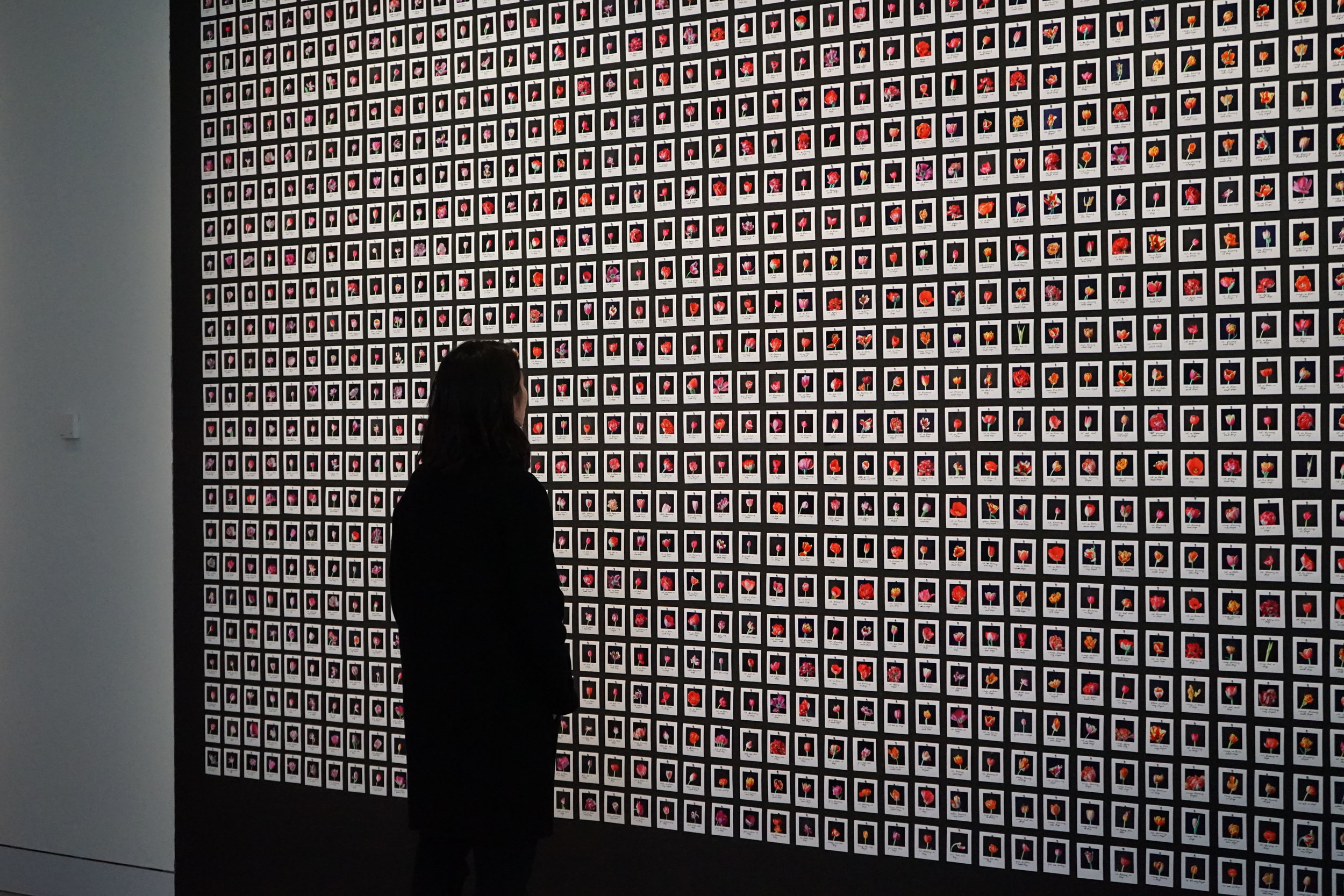
Mosaic Virus by Anna Ridler (2019)
Extrapolating on the "tulip fever" craze in 17th century Netherlands, Anna Ridler's installation,"Mosiac Virus," uses AI technology to develop stunning videos of synthetic tulips. In the real tulip industry, collectors value the flowers for uniqueness, viruses and mutations. Riddler highlights these prized features with her generated tulips; their unique mutations growing, blooming and adapting to the rise and fall of the bitcoin market. The project began with her searching for, photographing, and categorizing ten thousand tulips by hand, which became its own installation seen here. She then fed a generative adversarial network (GAN) these ten thousand photographs as a training set for her own creations. I find this supplementary installation equally, or perhaps even more, important than the project itself. When ownership of generative art is challenged, I question whether work generated with the photos or paintings of others can truly be considered theirs. With this training set however, Ridler creates wholy individual work that calls attention to the human labor that goes into creating generative, "autonomous" art. I feel that her work manages to capture the stunning nuances of a biological organism that organically encapsulates effective complexity.

Sources:
